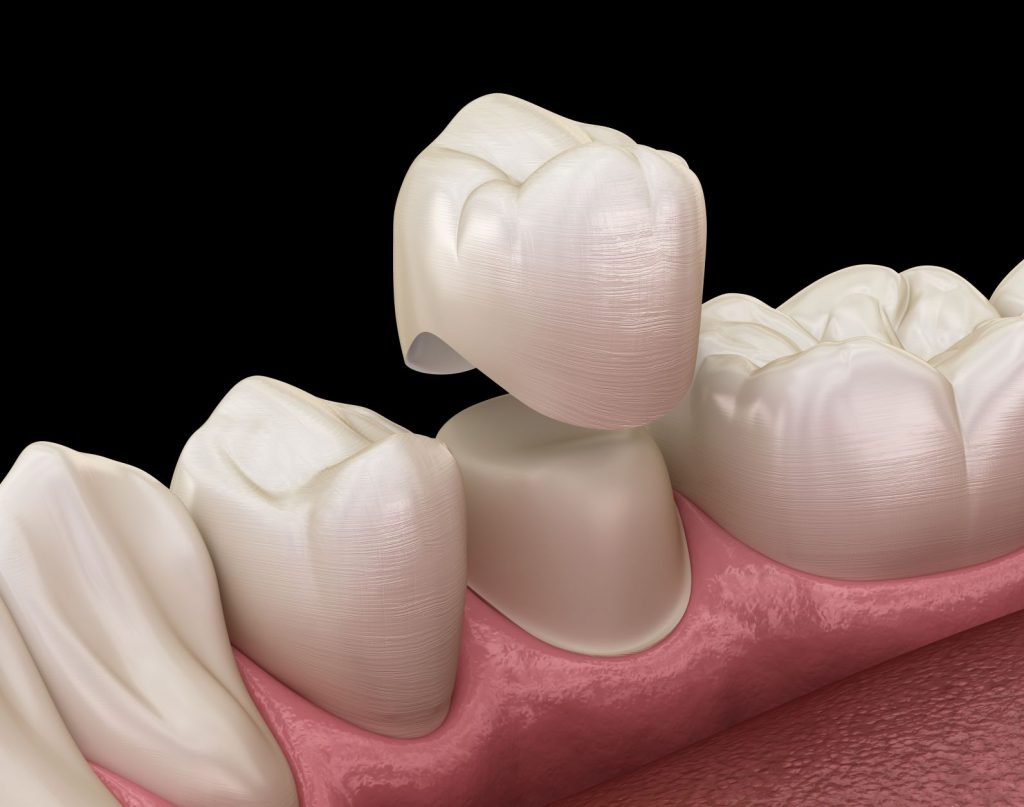If you’re interested in learning more about dental caps, you might be surprised to find out you already know more than you think. That’s because a dental cap and dental crown is the exact same thing. These two terms are often used interchangeably to describe a common dental restoration. And it’s easy to understand the confusion when you consider that dental crowns are tooth-shaped “caps” that are placed right over existing teeth. In essence, a dental cap becomes a tooth’s completely new outer surface.
While dentists usually prefer to use the term dental crown, plenty of people still refer to these restorations as dental caps, so your dentist will know what you mean if that’s what you say, too! Here are answers to some of the most common questions about teeth caps:
Why Dental Caps?
A dentist may recommend dental caps for several reasons. Dental caps help:
Restore a tooth’s shape, size and strength: Since dental caps completely cover your existing tooth, they restore your tooth’s shape, repairing a broken tooth, covering dental implants or holding a dental bridge in place. Dental caps can also help hold weak teeth together so they can withstand chewing and biting. If your tooth is weak from tooth decay, a root canal infection or if you have a cracked tooth, a dental cap may help. Improve a tooth’s appearance: Although teeth whitening, dental bonding and veneers can help improve the look of your teeth, dental caps may be appropriate if a discolored or misshapen tooth is also broken or severely decayed.
How Caps Are Placed
Preparing and placing dental caps requires more than one dental visit — unless your dentist uses a tool such as CEREC®. During the first visit, your dentist prepares the damaged tooth. (Depending on the extent of damage, this may involve a root canal.) Your dentist will provide a local anesthesia (and sedation dentistry if necessary), then file down the chewing surface and sides of the affected tooth to make room for the dental cap. Next, your dentist will take an impression of your teeth, which is sent to a laboratory where the dental cap is made. It usually takes the lab a couple of weeks to create your dental cap, so your dentist will prepare a temporary dental cap for you to wear in the interim.
During your second visit, your dentist will remove the temporary dental cap and check the fit of the custom-made dental cap. After providing local anesthesia, your dentist will cement the permanent dental cap into place.
Potential Problems with Dental Caps
Once permanent teeth caps are cemented in place, it’s not uncommon to experience some minor discomforts, such as:
Sensitivity to hot and cold food and drinks. Your dentist may suggest you brush with toothpaste designed for sensitive teeth, but call to make sure. An uncomfortable bite. It may feel like you bite down on the dental cap before your other teeth or like part of the dental cap is protruding more than the rest. This is a simple fix for your dentist, so call right away. Chipped or loose dental caps. Dental caps made of porcelain can sometimes chip. Depending on the size of the chip, your dentist can either repair it or replace it. If the cement washes away from your dental cap, it may become loose or fall off. Call your dentist immediately to find out what to do next.
How Long Caps Last
Teeth caps can last anywhere from 5-15 years. For best results, brush and floss regularly to keep dental plaque at bay. Dental caps will last longer if they aren’t exposed to too much wear and tear. Things like bruxism, clenching your teeth, chewing on ice and ripping open packages with your teeth can all limit the life expectancy of dental caps.

